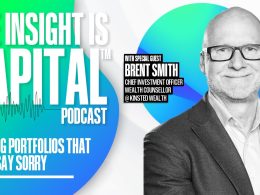by Kristina Hooper, Global Market Strategist, Invesco Ltd., Invesco Canada
The next few months will be critical for several countries as they hold elections that could either significantly change their leadership or endorse the status quo. In this blog, I preview the choices ahead for Japan, Brazil and the U.S.
Japan: Is a “new era” ahead?
On September 20, there will be a party leadership election for the Liberal Democratic Party (LDP) in Japan. This is a de facto election for prime minister, as the LDP holds a majority in the National Diet, Japan’s version of Parliament. This will not likely be a nail biter, as Prime Minister Shinzo Abe is widely expected to win a third term.
What’s more interesting to ponder is what Abe will do if he does win that third term. When Abe took office in early 2013, he instituted a “three-arrow” plan intended to stimulate the Japanese economy: One arrow is monetary stimulus, the second is fiscal stimulus and the third is structural reform. I believe Abe delivered on the first arrow with dramatic monetary stimulus through extensive large-scale asset purchases by the Bank of Japan. To a certain extent, he has also delivered on fiscal stimulus. Both these arrows have helped Japanese economic growth improve. Finally, he has made some progress with structural reforms, although there is far more work that can be done.
If he wins a third term, Abe will be the longest-tenured prime minister in Japan’s history. I expect him to continue to work on his three-arrow agenda, particularly structural reforms. However, Abe has ambitious new plans for Japan and wants to steer the country into a “new era” – and I don’t believe he is being hyperbolic when he states that goal.
Abe would like to revise Japan’s constitution, which was written in 1947 in the wake of losing World War II and not unsurprisingly prohibited Japan from fielding a real military and using war to settle disputes. Abe would like to make an important change allowing Japan to build its own military, reflecting the new world order that has evolved in the last several years. The change in U.S. presidential administrations clearly has rattled Japan, given that the current administration has questioned previous commitments to allies. In particular, there are concerns that the U.S. will arrive at a nuclear deal with North Korea that protects the U.S.’ interests but not Japan’s, leaving Japan defenseless given its lack of military resources.
I also expect Abe to push back on the U.S. in his third term if the U.S. attempts to start a tariff war with Japan. Abe, while maintaining cordial relations with U.S. President Donald Trump, has shown an independent streak when it comes to trade, remaining in the Trans-Pacific Partnership trade agreement after the U.S. pulled out.
And so, while this election may be a fait accompli, it is still important as it suggests we will see a further move toward a new world order in terms of foreign policy and a greater likelihood of trade conflicts.
Brazil: Will “the Brazilian Donald Trump” prevail?
Brazilians will go to the polls on October 7 to vote on a new leader (if no candidate reaches 50% of the vote in the first round, run-off elections will occur on October 28). Brazil’s economy may be slowly expanding, but its government continues to be plagued by allegations of corruption by its leaders, including former presidents Dilma Rousseff and Luiz Inacio Lula da Silva (simply known as “Lula”).
Among a crowded field of candidates representing left, right and center politics and various levels of reform, Jair Bolsonaro has emerged as the most popular candidate, and his popularity has only grown after being stabbed recently. Bolsonaro is a right-wing populist, and he is so well-known for his nationalist views that he has been referred to as the Brazilian Donald Trump. If Bolsonaro wins the election, I expect Brazil to take a step away from globalization in terms of foreign policy and trade. (At the moment, voters seem to be overlooking Geraldo Alckmin, a pro-free trade centrist and genuine reformer who could be more positive for the economy, in my view.)
U.S.: Will Republicans lose their grip on the House?
Mid-term elections in the U.S. are slated for November 6. While Americans will not be electing a president, their decisions at the voting booth have the potential to impact the current administration. Right now it is expected that the House of Representatives, the lower house of Congress, will flip to the Democratic Party while the Senate will remain majority Republican and is likely to add to its majority. In this scenario, I would expect that most of the president’s nominees would continue to be confirmed given that this duty falls to the Senate (which is often described as a personnel department). However, in this scenario, it is also likely that the House of Representatives would begin a number of investigations into the Trump administration.
Investigations may divert the administration’s attention away from its policy agenda. However, I think it’s important to note that the U.S. has already reaped the benefits of much of the pro-growth portion of this agenda with deregulation and the comprehensive tax reform package. Other elements of the agenda, such as trade policy, are not as pro-growth in nature, and so it may not be a bad thing to have a check on the administration’s power, in my view. In addition, a Democratic takeover of the House may embolden pro-growth Republican senators who want to challenge the Trump administration on trade, but may be afraid it would impact their popularity.
Of course, there is a good chance both chambers of Congress remain Republican. This would suggest that what we have experienced in 2018 is likely to continue, especially if Republicans gain seats in the Senate and have a more comfortable majority. In this scenario, we could see some key provisions in the tax reform package made permanent (they currently have a sunset provision). However, what is very unlikely is a Democratic sweep in the House and Senate. In this scenario, one positive could be the passage of a sizeable infrastructure spending bill – an item that is on the administration’s agenda but one that would likely be blocked by a Republican Congress because of concerns about a growing deficit. According to research from the Congressional Budget Office, infrastructure spending has historically had a high multiplier effect, which means it can be very stimulative to the economy. In addition, infrastructure spending – when done well – can function as a capital investment in the future of the economy. Consider the infrastructure created by the WPA (Works Progress Administration) in the 1930s, such as New York’s LaGuardia Airport, or the highways created in the 1950s through federal spending; this was infrastructure upon which commerce could be conducted for decades to follow. However, for most of the administration’s agenda, there could be extreme gridlock.
Key takeaway
When thinking about the implications of elections, it’s important to remember the famous adage from “the father of value investing” Benjamin Graham: In the short run, the stock market is a voting machine while in the long run, the stock market is a weighing machine. In other words, if investors have a long enough time horizon, they shouldn’t worry about short-term fluctuations in the stock market because they are not a reflection of fundamentals.
The reality is that most political developments don’t have a material impact on stock market fundamentals. However, there are exceptions, such as the escalation in protectionist actions, which is likely to negatively impact consumer spending and corporate earnings. But situations like this are very difficult to predict as there are so many different possible outcomes. Therefore, I believe investors with longer time horizons should consider maintaining broad diversification in their portfolios. That may mean exposure to stocks, bonds and alternative asset classes – and extensive diversification within those three asset classes.
The Lehman failure: 10 years later
Saturday marked the 10th anniversary of the failure of Lehman Brothers – which was a critical event in the unfolding of the global financial crisis. I believe it’s appropriate to spend a few moments on this historic event. In the wake of that crisis, the U.S. has certainly promulgated a number of regulations intended to prevent a similar crisis. For example, the reforms we have seen around the mortgage industry (and keep in mind that housing was at the epicenter of the crisis in the U.S.) were an appropriate response to the crisis and are likely to prevent a similar housing bubble and bust, in my view.
In general, I am a strong advocate of smart reforms. In my view, the perfect example of such can be found in the post-Asian currency crisis reforms, which have been incredibly valuable in preventing future crises. However, I worry that some of the reforms instituted after the global financial crisis may make us more vulnerable to another crisis. For example, the Volcker Rule – a component of the Dodd Frank reforms that essentially prevents banks from speculation in markets – may have increased the likelihood of a crisis because it removes important market makers, thereby reducing liquidity.
Additionally, the U.S. doesn’t have many tools available at its disposal, either fiscal or monetary, to combat another crisis if one does occur. With such a high level of government debt, we may find Congress unwilling to spend a lot to stimulate the U.S. economy in the event of a crisis. And the Federal Reserve (the Fed) has only just begun normalizing monetary policy, so it doesn’t have a lot of “dry powder” to tackle a new crisis. The Fed has an enormous balance sheet as a result of three phases of quantitative easing, and while it has started to unwind its balance sheet, it is still incredibly bloated – much bigger than it was a decade ago when the global financial crisis started.
So it’s unclear how much the Fed would be willing to expand its balance sheet in the event of another crisis. And while the Fed has hiked rates seven times (and is very likely to hike them again in September), the fed funds rate is still relatively low, so there are only so many rate cuts the Fed could implement to stimulate the economy in the event of a crisis. (By comparison, the fed funds rate was over 5% at the start of 2007,1 so the Fed had the ability to dramatically drop rates in order to combat that crisis.) In my view, the situation is even worse for central banks that have only just begun – or not yet begun – to normalize. While a crisis may be far off, it is never too soon to be thinking about what weapons are available to combat it when it does arise.
This post was originally published at Invesco Canada Blog
Copyright © Invesco Canada Blog














